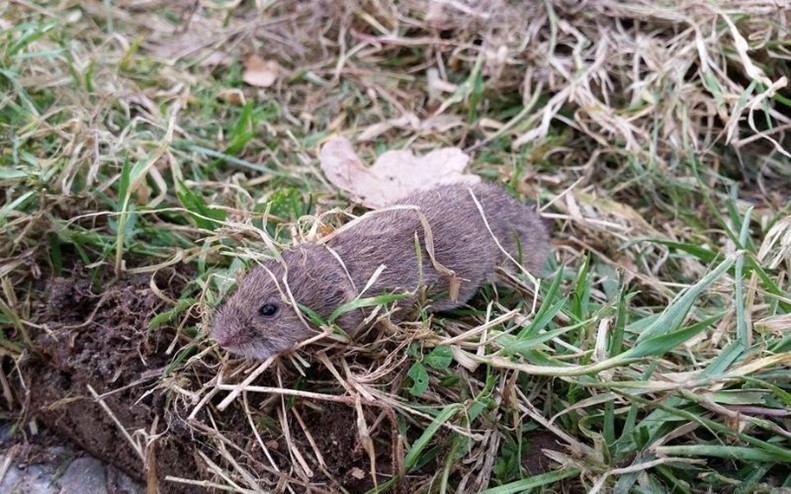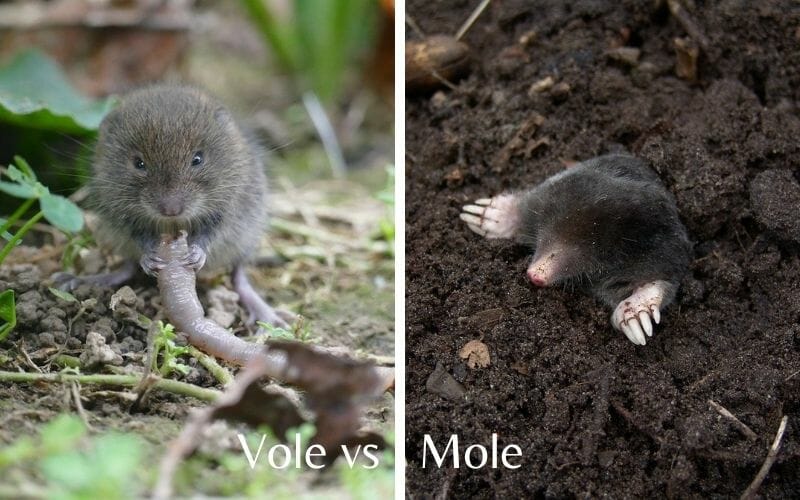How To Keep Moles And Voles Out Of Garden
Voles: they're a tiny animal that can drive homeowners and gardeners crazy! Known for creating networks of deep, crisscrossing tunnels, voles can wreak havoc on a lawn or garden. If you've ever wondered how to get rid of voles, you're not alone.
Here at Smith's Pest Management, our team specializes in helping clients in and around the San Francisco Bay area identify the best way to get rid of voles in their yard, so we know a thing or two about the process.
In this post, we'll share our top tips and tricks to help you become a vole extermination master.
Let's dive in.

How Do I Know If I Have Voles in My Yard?
Here are a few sure-fire signs of voles in your yard:
- Paths 1"-2" wide in the turf surface.
- Vole burrows, which look like holes in the lawn or around the bases of trees. Unlike molehills, these dens do not feature soil mounding.
- Spaceswhere the grass of the lawn is suddenly very short.
- Noticeablegnaw marks on the stems of woody plants and young trees.
- Exposed stems that have been gnawed to a pointed tip.
- Dead plantsthat, when lifted, have no root structure remaining.
Since voles reproduce rapidly, it's critical to control the populations at the first sign of infestation.
Can Voles Damage My Lawn and Yard?
The short answer is yes. Voles can be very damaging to a lawn and yard. They love to chew the vulnerable stems of young trees and woody ornamental plants, causing severe damage and dieback.
Voles also cause considerable turf damage, which most homeowners discover in the spring.
All winter long, snow cover protects voles from predators and provides shelter for feeding. In the spring, when the snow melts, homeowners often find the telltale "runways" of a vole infestation.
These runways look like a series of raised tunnels in the grass surface and are formed when voles feed within the turf canopy. As voles feed in these "runways," they chew plants down to the growing point at ground level, impeding later plant growth. They also leave layers of excrement along the runways and wear down the grass surface with their foot traffic.
How Do You Fix a Vole-Damaged Lawn?
If voles have damaged your lawn, you want to restore it as quickly as possible. Here are a few quick tips:
- Give the entire lawn surface a gentle rake tobreak up debris and excrement in vole runways and promote lawn growth.
- Fill in vole pathways with topsoil.
- Fertilize and overseed any areas of thin or chewed-down grass.
- Prune and fertilize trees or shrubs that have been gnawed on by voles.

If you have severe vole damage in your lawn, hire a professional company that offers turf and ornamental treatments. Smith's Pest Management provides damage treatment options to reclaim your space and revive areas damaged by voles.
How to Get Rid of Voles: 5 Effective Ways
You've worked hard to create a beautiful outdoor space. Now you want to protect it. Follow these tips to enjoy a healthy, vole-free yard:
1. Remove vegetation
Voles don't like to feed out in the open. With this in mind, one of the easiest ways to control their numbers is through habitat modification. Remove dense ground cover, keep the lawn mowed, keep mulch light around trees and shrubs, and keep up on snow removal.
2. Protect young trees
Voles love to gnaw on the trunks of young trees. To discourage this behavior and remove a favorite food source, wrap the lower trunk of young trees with a guard, like a wire mesh or plastic tubing.
3. Use live traps
Live vole traps have one purpose: to trap animals without killing or injuring them. Although live traps may not be the best bet for severe vole infestations, they're a great way to control vole numbers or remove a few individual animals. Just be sure that you remove the voles as far as possible when you release them, or you may find that they come right back to your property.
4. Use natural repellants
Like most sensible animals (and people), voles hate the taste and smell of castor oil. Sprinkling a bit of it around your landscaping can deter the rodents. Voles also dislike capsaicin, the potent compound in peppers that makes them taste spicy. To deter voles naturally, mix chopped hot peppers with water and biodegradable dish soap. Spray vole hotspots in your lawn and landscaping with the mixture to prevent voles from nibbling on your plants.
5. Contact a professional pest management company
If you want a fast, comprehensive vole removal service, the best option is to hire a professional team. Smith's Pest Management offers eco-conscious vole removal services in the San Francisco Bay Area that will end the infestation and help you reclaim your lawn.
How Long Does it Take to Get Rid of Voles?
The answer to this question depends on which method you use. If you've chosen to set live traps, for example, you can expect to spend about3-4 weekswhittling down your vole population.
If you prefer to hire a professional pest control service for vole control, you'll see much faster results. Companies like Smith's Pest Management provide prompt removal services that will help you reclaim your property quickly.
Voles vs Moles: What Are the Differences?
While the names sound similar, voles and moles are not the same animals. Although they may both make tunnels in your yard, there are some critical differences between the two.

Here's a breakdown:
Voles
Voles look like field mice. They are small rodents with round, compact bodies, short tails, ears that lie close to their bodies, and small eyes. They're typically about 5-8 inches long and have large teeth meant to gnaw plant stems and roots.
Voles are known for their tendency to dig. They make tunnels in the soil and create golf ball-sized exit holes in existing mole tunnels. Voles eat plants. Like many other rodents, they enjoy a vegetarian diet, gnawing away at the stems of plants and grass blades. Their tunnels tend to be near the surface of a garden or yard because of their preferred food sources.
When voles are present on your property, you may notice previously healthy plants keeled over with their roots chewed off. Once voles establish a colony, they breed quickly, so controlling the spread is essential.
Moles
Unlike voles, moles are not rodents. Instead, they're small mammals that spend much of their lives underground, digging tunnels. They're between 4-7 inches long with large, paddle-shaped feet and prominent claws that help them move soil.
Their distinctly-shaped heads and snouts are elongated. They have small eyes and no external ears. Their bodies are covered in dense, brown-gray fur that has no grain. This allows the mole to move quickly in all directions underground.
Moles are prolific diggers. They're known for creating volcano-shaped hills in lawns and garden soil. According to the Home & Garden Information Center at Clemson University's Cooperative Extension:
[Mole] tunnels are dug at a rate of 18 feet per hour. Moles can add 150 feet of new tunnels in the lawn each day. Moles are expert diggers that will consume up to 60 to 100% of their body weight in insects, grubs, and earthworms each day. This equates to a 5-ounce mole eating 50 pounds of its prey in a year.
While moles, like voles, tunnel in gardens, it's a misconception that they do so to eat the roots of plants. Instead, they target earthworms that live in the garden soil.
If moles are damaging your garden, hire professional mole control services to stop the cycle or read about how to get rid of them here.
Are Voles Taking Over Your SF Bay Area Yard? We Can Help!
Don't live with voles and the damage they do to your outdoor spaces. Hire a professional pest management company to help. Here at Smith's Pest Management, we specialize in solutions-based, comprehensive vole control for homeowners in and around the San Francisco Bay Area as well as the Santa Cruz and Monterey areas.
Whether you're trying to protect your garden or wanting to keep your beautiful yard vole-free all winter long, our team can help.
Contact us today to learn more about our professional services or to request an appointment
How To Keep Moles And Voles Out Of Garden
Source: https://smithspestmanagement.com/blog/post/how-to-get-rid-of-voles-in-your-yard-and-garden/
Posted by: washingtonmorave.blogspot.com

0 Response to "How To Keep Moles And Voles Out Of Garden"
Post a Comment